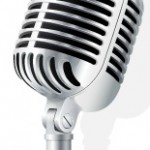What’s Next For HD Radio
 HD Radio had high hopes of being included in SDARS receivers. If such a requirement were mandated by the FCC, the business model of terrestrial radio could continue virtually unfettered, and without offering up a revenue share to automobile manufacturers.
HD Radio had high hopes of being included in SDARS receivers. If such a requirement were mandated by the FCC, the business model of terrestrial radio could continue virtually unfettered, and without offering up a revenue share to automobile manufacturers.
At this point there is no requirement to include HD in satellite radio receivers. This means that HD needs to go back to the drawing board… literally. The marketing method of HD has thus far yielded deals with only BMW and Ford. In the case of Ford, getting an HD receive means giving up on the highly touted SYNC system, something consumers are not likely to do.
HD Radio is a decent concept, but they need to offer far more to get consumers to clamor for their technology. Whether they like it or not, terrestrial radio’s HD version may well have to pony up subsidies to OEM’s, and maybe even cut a deal with SDARS.
HD touted in the satellite radio merger case that the HD chipsets only cost $10. While Sirius Buzz readers know this is only a portion of the cost, perhaps Ibiquity should bite the bullet and cut deals. HD recently received $40,000,000 from congress to promote their technology. At $10 per chip, HD could get into 4,000,000 cars this year if they are able to convince an OEM to accept $10 to install the technology. Yes, $10 is unlikely to woo the OEM’s, but HD could get a start. In my opinion, HD radio needs to follow a path similar to that which SDARS followed. They need to pay to get into the game.
HERE ARE SOME STEPS HD CAN TAKE TO BE VIABLE:
1. Come to terms with the fact that an installation subsidy is needed. Take the $40 million supplied by congress, and add to it a contribution from all HD Radio players. Raise about $200 million total, and go to the OEM’s. The OEM’s will seek an installation subsidy as well as a revenue share. The revenue share may be steep, but you need to start somewhere.
2. Negotiate with SDARS. While mandated installations has not been a success, there is nothing that would stop HD from cutting a deal with SDARS. Take SDARS content, and broadcast it with commercials on HD. In return, give SDARS ad spots that say something like, “Do you like the Pulse? Get the Pulse and many other music channels commercial free on Sirius at prices starting as low as $6.99 per month. Go to HDRadio.com for details.” HD can get a revenue share from SDARS for bringing in track-able subscribers. HD gets content that differs from that which is playing on the non-HD channel. SDARS will get a portion of the ad dollars. If worked properly, such a deal could be beneficial to all parties.
3. Make HD Radio special. Make it something that listeners do not get on regular radio. Less commercials, better play lists, etc. Get an Internet radio service running that lets fans interact, download songs, etc. Trim the ads. Get a tag line like “HD Radio….Better sound and half of the commercials….Better yet, it’s free!”
4. Sponsor channels on services like LastFM, Pandora, or Slacker.
Simply stated, HD Radio is not getting “pull” from consumers. In order to get to a “pull point”, HD needs to have something special that consumers want. Right now most consumers feel that HD is nothing but the regular feed with better sound quality. Who wants better sounding commercials?
Now is the time for HD to shift gears. Don’t let another holiday season pass with the status quo. Don’t let another model year pass with little or no installations. Maybe even go to an open access manufacturer and pay them to include an HD chipset into the SDARS mix. HD can not ride the gravy train for free. They need to spread a bit of the wealth if they want to play in the audio entertainment landscape.
I can’t blame HD and Ibiquity for trying to get something for nothing. If they had succeeded, it would have been a brilliant business move. It is now time to move on, and come to terms that the money pie needs to have some pieces distributed to others. Adjust the business model, or fail. It is that simple.
Position: Long Sirius, XM.





“The marketing method of HD has thus far yielded deals with only BMW and Ford. In the case of Ford, getting an HD receive means giving up on the highly touted SYNC system, something consumers are not likely to do”
“iBiquity Digital Investor Information”
“Leading Manufacturers include Ford Motor Company, Harris Corporation, Texas Instruments and Visteon Corporation. Leading financial institutions, such as Grotech Capital Group, Intel Capital, J.P. Morgan Partners, New Venture Partners and Pequot Capital.”
http://www.ibiquity.com/about_.....nformation
Ford happens to be an investor in iBiquity.
“HD recently received $40,000,000 from congress to promote their technology.”
“The Wonderful World of HD Radio”
“Perhaps it is because it is the American Public that has been paying a large portion of the development costs for HD radio? Yup, that is you and I. An FCC filing from North Carolina’s Public Radio Stations cites: Just a few weeks ago, the House Appropriations Committee approved an additional $40 million to assist public radio stations’ transition to HD radio technology.”
http://tinyurl.com/57ksx6
That money is ear-marked for CPB/NPR stations.
“At $10 per chip, HD could get into 4,000,000 cars this year if they are able to convince an OEM to accept $10 to install the technology.”
“U.S. automakers not jumping into HD Radio” April 2007
“The radios are estimated to cost about $45 each to install, or each of the three carmakers about $150 million to $200 million annually, automotive industry sources said.”
http://www.reuters.com/article.....0220070427
The cost is $45/radio to install – way too much.
“Get a tag line like “HD Radio….Better sound and half of the commercials….Better yet, it’s free!”
“NDS RadioGuard”
“What is NDS RadioGuard? NDS RadioGuard is the first conditional access solution for HD radio, the in-band on-channel (IBOC) solution that enables digital multicast and multi-channel broadcasting.”
Ibiquty is trying to get RadioGuard approved for new HD radios (laugh), and any encrypted channels would not be receivable by current HD radios (scam).
“Raise about $200 million total, and go to the OEM’s. The OEM’s will seek an installation subsidy as well as a revenue share. The revenue share may be steep, but you need to start somewhere.”
“iBiquity Digital raises yet another round to fuel HD Radio ambitions”
March 28, 2008
“The Columbia, Md., company is in the process of raising a $15 million fourth round of venture capital, VentureBeat has learned… It’s not clear whether this is enough to make HD Radio appealing… The company has raised an estimated $115 million in three earlier rounds… The company declined to comment.”
http://tinyurl.com/2muftt
iBiquity is bleeding money, and trying to raise $15 million more – lots-of-luck!
“Sponsor channels on services like LastFM, Pandora, or Slacker.”
How could that ever work? HD Radio is noninteractive, and personalized music services, such as Pandora and Last.fm will kill HD Radio:
http://siteanalytics.compete.c.....?metric=uv
I don’t think they’ll pony up the cash to convince OEM’s to install the radios.
That means they would actually have to compete and… SPEND MONEY.
Noooo. Can’t have that.
content, content, content!
They have 1 big draw – Rush. They need to have the guts to take him off analog & put him only on HD-2.
I know it won’t happen.
I really think Sirius is missing the boat on HD Radio. It sees it as competition and I am not sure it really is.
If for example, all Sirius Radios were HD capable that would be the best selling point I can think of. It gives Sirius for a very small initial cost expanding content it pays no cost for.
Consumers, over time, will begin to associate HD Radio with Sirius Radio instead of AM/FM. One of the biggest negatives of Sirius is its strongly national – New York focus – whereas HD Radio could fill that gap giving it a local feel.
Sirius is too caught up in the car contract model that sees HD as a competitor. I think most consumers see it or would see it as a complementary service that maximizes Sirius content.
I do hope that Sirius does take seriously the fact that HD capabilities would increase the likelihood of consumers ditching terrestrial radio in the home. I hope it realizes that HD radio is not an impediment but an essential component of their future growth.
pocketradio…..
In the section of sposoring a channel, they would not need to be interactive, merely allowing their content to be broadcast on these services would give them exposure.
“In the section of sposoring a channel, they would not need to be interactive, merely allowing their content to be broadcast on these services would give them exposure.”
I’ve tried Pandora and Slacker, and I see no reason why either company would want to include HD Radio streams. Personalized music services are the future. Besides, with being able to personalize one’s own radio station, why in world would anyone want to listen to someone else’s programming streams?
@Henry Dubb
“Pioneer says HD Radio succcess should be decided by open market, not forced inclusion”
“IBiquity, the company behind HD Radio, is making enemies all over the place, the latest of which is Pioneer. The Japan-based corp, which makes the popular Inno, recently told the FCC [PDF] that iBiquity’s scheme to force satellite radio manufacturers to include HD Radio playback is absurd. The iBiquity conditions would limit the breadth of radio product offerings to consumers, limit which radio component suppliers’ products be designed into radios, have the effect of decreasing AM/FM tuning performance, unnecessarily increase costs to consumers uninterested in HD Radio and interfere with the useful and healthy free market mechanisms extant in radio electronics purchases.”
http://tinyurl.com/5f9q2b
Pocket Radio,
You seem very much in the mind set that HD Radio is a competitor of sorts. Outside the Saab world of installed radios I don’t see it.
My point was not that Sirius should be forced to install HD receivers, but that they were missing the boat if they didn’t.
The one big negative of Sirius is its New York / national delivery of content. HD Radio would give it reasonably priced content that also fills the regional local gap.
Fine, let the market decide. Sell Sirius receivers with HD for 49.95 with expanding national, regional, and local content, and Sirius receivers with HD Radio for 39.95. I have no doubt what the invisible hand will do.
Give me a break, if the market was open, someone like myself wanting to move from analog to digital delivery of content would have an option to buy a Sirius receiver with an HD tuner. It is certainly not the market that is the problem here. This is exactly why Sirius is losing customers to the the Ipod and pod casting.
I will probably be the next one. Currently I listen to Sirius through an FM transmitter on an old analog boom box. This is the only way I can listen to Sirius and local radio on one device. And you don’t think there is a market for a device to simplify my audio listening.
@Henry Dubb
You are on the wrong site to promote HD radio’s in Sirius tuners… HD IS the competition. HD radio is awful product. HD can pony-up to car manufacturers and let the people decide if they want it or not. HD radio does not reach far enough (miles), has constant drop outs and it ruins the AM band. Maybe HD should include Sirius satellite radio in their product since any manufacturer can build Sirius radio’s now. Maybe then I would buy one… We are satellite radio fans NOT HD radio fans.
Mrwirez,
I don’t have an HD Radio, so fan is too strong a word. I do have a Sirius Radio at home though.
But point taken, account canceled.
pocket…..
Among the reasons a Pandora or Slacker would work with HD is for exposure. HD, by sposoring channels, etc., can expand their image, while the pandora’s and Slackers of the world can do the same. Such a concept was tried with XM and napster, altough neither side really made as much of the deal as they could have.
There will be a timne when cxertain cross promotions are benifical to everyone. A good business deal where all parties can benefit is what it takes
What has not been mentioned is the sub-par sound of satradio receivers due to low banwidth & lack of a FM sounding delivery! How about Sirius teaming up W/Imbiquity to get High Definition satradio broadcast in return carry HD Radio in Satcasters with a possibility to carry “out of local area HD Internet Radio broadcast”.Ex;:pick up local broadcast of WHTQ Orlando,Fl. in Dallas/Ft.Worth In HD1,HD2 or HD3 Via Satelite Internet HD Radio. Everybody Happy Now !!!!!!!!!:)